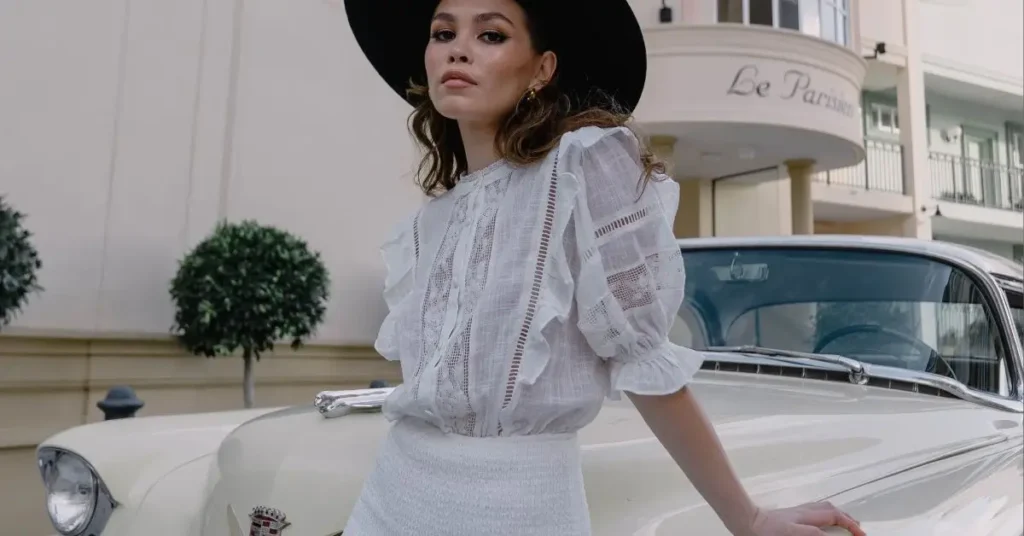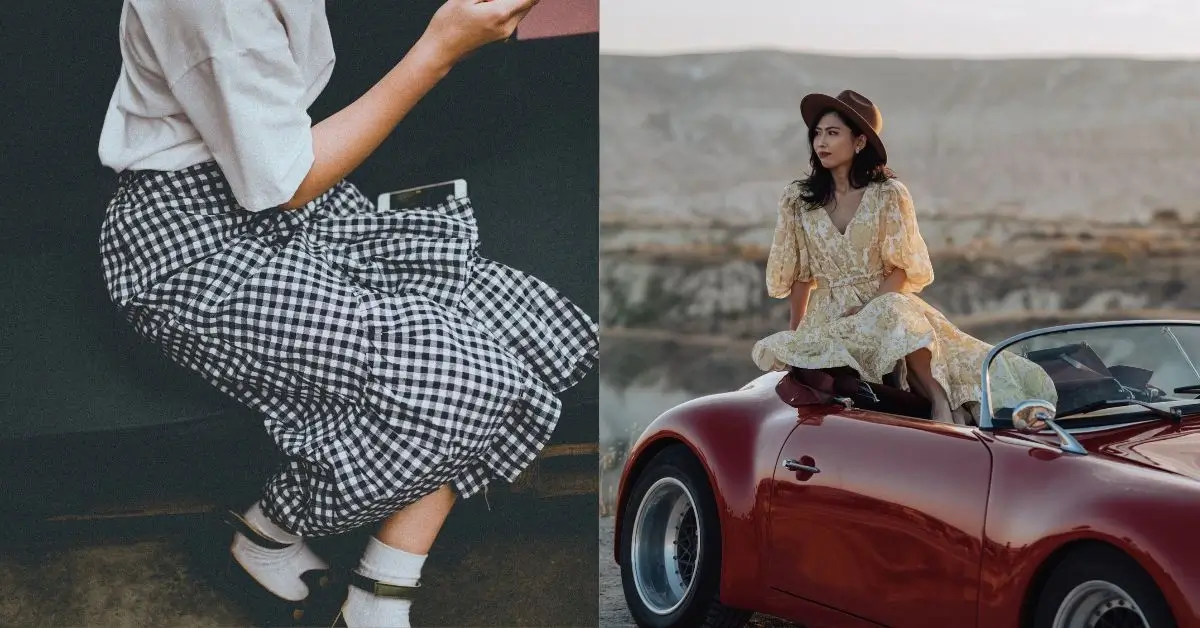Do you have a passion for vintage fashion? Do you possess a valuable collection of vintage attire that you wish to maintain for years to come? If this sounds like you, then you understand the challenge of properly washing vintage clothing. You want to ensure your garments are cleaned without causing any harm, but you may be uncertain of the best method. Fear not! In this article, we will guide you on how to safely and efficiently wash your vintage clothing.
Vintage clothing requires special care and attention when it comes to washing. Unlike modern clothing, vintage garments are often made from delicate fabrics that can quickly shrink, fade, or tear if not handled properly. That’s why knowing how to wash vintage clothes correctly is important. You can keep your vintage garments looking their best for years with the proper techniques and products. So, let’s dive into vintage clothing care and discover how to wash vintage clothes like a pro.
Identifying Fabric Types
Cotton
Cotton is a standard fabric used in vintage clothing. It is a natural fiber that is durable and easy to care for. Cotton can be identified by its soft and breathable texture. It is also known to wrinkle easily.
Lace
Lace is a delicate fabric that requires special care when washing. Its intricate patterns and delicate texture can identify it. To prevent damage, the lace should be hand washed or washed on a gentle cycle in a mesh laundry bag.
Linen
Linen is a natural fiber that is lightweight and breathable. It is often used in vintage clothing due to its durability. Linen can be identified by its crisp texture and tendency to wrinkle easily.
Silk
Silk is a luxurious fabric that requires gentle care when washing. Its smooth texture and shiny appearance can identify it. Silk should be hand washed or washed on a delicate cycle in cold water.
Polyester
Polyester is a synthetic fabric that is commonly used in vintage clothing. It is durable and easy to care for. Polyester can be identified by its smooth texture and tendency to resist wrinkles.
Wool
Wool is a natural fiber that is warm and durable. It can be identified by its fuzzy texture and tendency to shrink when washed. Wool should be hand washed or dry cleaned to prevent damage.
Vintage Fabrics
Vintage fabrics can be made from various materials, including bark cloth, which was popular in the 1940s and 1950s. Bark cloth can be identified by its textured appearance and is often used in home decor and upholstery.
Why Hand Washing is Crucial
Preventing Damage
When you wash vintage clothes in a machine, the agitation can cause damage to delicate fabrics. This is especially true for items like silk, which can be easily torn or stretched out of shape. Hand washing allows you to control the amount of agitation and prevent damage to your vintage clothes.
Maintaining Color and Texture
Another benefit of hand-washing vintage clothes is that it helps maintain their color and texture. When you wash clothes in a machine, the friction can cause the fabric to become worn and fade over time. Hand washing is gentler on the material, which helps to preserve its original color and texture.
How to Wash Vintage Clothes: Preparation Before Washing

Check for Stains and Dirt
Inspect your vintage clothes for any stains or dirt. Use a stain remover or pre-treatment solution to remove any stubborn stains. First, follow the instructions on the product label and test it on a small, inconspicuous area to avoid damaging the fabric.
Soak in Rinse Water
Soaking your vintage clothes in rinse water before washing can help remove any dirt and grime. Fill a sink or basin with lukewarm water and add a small amount of mild detergent. Gently agitate the water to create suds, then add your clothes. Let them soak for 30 minutes, then gently squeeze the water out.
Prevent Bleeding
Some vintage clothes may bleed color when washed. Add a cup of white vinegar to the rinse water to prevent this. This will help set the dye and prevent it from bleeding.
Check for Holes and Deterioration
Inspect your vintage clothes for any holes or signs of deterioration. If you find any, avoid washing them, which can further damage the fabric. Instead, take them to a professional for repair.
Be Gentle with Seams
Seams are often the weakest part of vintage clothes, so it’s important to be gentle when washing them. Avoid scrubbing or rubbing the seams, which can cause them to fall apart. Instead, use a soft, circular motion when washing.
Choosing the Right Detergent
Mild Detergents
One of the most important things to remember is to use a mild detergent. Harsh detergents can damage the delicate fibers of vintage fabrics. Look for detergents specifically designed for soft fabrics, such as Orvus Paste, available at many sewing and art supply stores. It has cleaning and whitening properties but is gentle on fabric.
Color-Safe Bleach
To remove stains from your vintage clothes, use a detergent containing color-safe bleach. Avoid using chlorine bleach, as it can damage the fabric and cause it to yellow over time. Instead, look for a non-chlorine bleach that is safe for delicate fabrics.
Vinegar
Adding a small amount of white vinegar to the rinse water can help remove any remaining soap residue and restore the fabric’s luster. Soak the garment in cool to tepid water with mild soap or gentle shampoo, rinse well in cold water, then add a small amount (several tablespoonsful in a 5-gallon bucket) of white vinegar to clean rinse water.
Lemon Juice
Lemon juice is a natural alternative to bleach to help remove stains and brighten white fabrics. Mix equal parts lemon juice and water and apply it to the color. Let it sit for a few minutes before washing as usual.
Phosphate-Free Soap
Phosphates are chemicals that are commonly found in laundry detergents. They can be harmful to the environment and can cause damage to delicate fabrics over time. Look for phosphate-free soaps that are gentle on vintage fabrics.
Washing Techniques for Different Fabrics

Cotton and Linen
Cotton and linen are sturdy fabrics that withstand machine-washing on a gentle cycle. However, using cold or cool water is best to prevent shrinkage or color fading. Pre-treat the stains with a mild detergent or stain remover before washing if the garment is heavily soiled. Once the cycle is complete, remove the excess water by gently squeezing the garment or using a towel to pat it dry. Hang or lay flat to dry.
Silk and Lace
Silk and lace are delicate fabrics that require special care when washing. Hand-washing these fabrics in cool water with a gentle detergent is best. Avoid agitating the fabric too much, as this can damage the fibers. Rinse the garment thoroughly and gently squeeze out the excess water. Lay the garment flat on a towel and roll it up to remove any remaining water. Hang or lay flat to dry.
Wool and Cashmere
Wool and cashmere should be hand-washed in cool water with a gentle detergent. Avoid using hot water or excess water, as this can cause the fabric to shrink or lose its shape. Gently agitate the cloth to remove dirt and stains, then rinse thoroughly and gently squeeze out the excess water. Lay the garment flat on a towel and roll it up to remove any remaining moisture. Reshape the garment if necessary and hang or lay it flat to dry.
Polyester and Other Synthetic Fabrics
Polyester and other synthetic fabrics are typically more durable and can withstand machine-washing on a gentle cycle. Use cool or warm water and mild detergent. Avoid using hot water or excess water as this can cause the fabric to shrink or lose its shape. Once the cycle is complete, remove the excess water by gently squeezing the garment or using a towel to pat it dry. Hang or lay flat to dry.
Before washing any vintage garment, be sure to check the care tag for specific washing instructions. Consider taking the garment to a professional cleaner if it is particularly delicate or valuable. With the right washing techniques, you can clean and care for your vintage clothes so that they can be enjoyed for years to come.
Drying Vintage Clothes
Air-Dry Your Vintage Clothes
The best way to dry your vintage clothes is to air-dry them. Air drying helps to preserve the fabric’s integrity and prevents shrinkage. Hang your clothes on a hanger or a clothesline in a well-ventilated area. Be sure to avoid direct sunlight as it can fade the colors of your clothes. You can also lay your clothes flat on a clean towel to dry.
Avoid Heat
Avoid using heat to dry your vintage clothes. Heat can cause the fabric to shrink, fade or lose its shape. Do not use a dryer, iron or any other heat-generating appliance to dry your vintage clothes.
Ironing and Pressing
If your vintage clothes are slightly damp, iron or press them to remove any wrinkles. However, be sure to use a low heat setting and place a clean cloth between the iron and the fabric to avoid any damage.
Check for Dampness
Before storing your vintage clothes, make sure they are scorched. Check for dampness by touching the fabric with your hand. If it feels slightly damp, hang it in a well-ventilated area until it is scorched.
Dealing with Tough Stains and Odours
How to wash vintage clothes is a tricky question, and it becomes even more difficult when dealing with tough stains and odors. Fortunately, some tried and tested methods can help you get rid of these stubborn issues without damaging your precious vintage pieces.
Stains
Stains are a common problem with vintage clothes, and they can be caused by various things, from food and drink spills to sweat and makeup. To tackle stains, you need to identify the type of stain and choose the appropriate method to remove it.
- For oil-based stains, sprinkle cornstarch or talcum powder on the stain and let it sit for a few hours. Then, brush off the powder and wash the garment as usual.
- Soak the garment in cold water with a small amount of enzymatic laundry detergent for protein-based stains, such as blood or sweat. Then, wash the garment as usual.
- Mix lemon juice and salt for rust stains equal parts and apply the mixture to the stain. Let it sit for a few hours, then rinse the garment with cold water.
Odours
Vintage clothes can also develop unpleasant odours over time, especially if they were stored in a damp or musty environment. To get rid of odours, you can try the following methods:
- Hang the garment outside in the sun and fresh air for a few hours.
- Sprinkle some baking soda on the garment and let it sit for a few hours. Then, shake off the powder and wash the garment as usual.
- Place the garment in a plastic bag with a few dryer sheets for a day or two.
Bleach
Bleach can be a powerful tool for removing stains and odours but can also damage vintage fabrics. If you decide to use bleach, make sure to follow these guidelines:
- Use oxygen bleach instead of chlorine bleach, which is gentler on fabrics.
- Dilute the bleach according to the instructions on the package.
- Test the bleach on a small, inconspicuous area of the garment first to ensure it doesn’t cause any damage.
When to Seek Professional Help
If you’re dealing with delicate fabrics like silk or lace, it’s best to let a professional handle the cleaning process. These fabrics require special care and attention, and a dry cleaner will have the expertise and equipment necessary to clean them without causing damage.
Similarly, if your vintage garment has intricate beading or embroidery, it’s best to seek a professional who can clean it without damaging the delicate embellishments. Attempting to clean these garments at home can result in difficult or impossible to repair damage.
If your vintage garment has a strong odor, such as cigarette smoke or mildew, it’s also a good idea to take it to a dry cleaner. These professionals have access to specialized cleaning solutions that can remove even the toughest odors, leaving your vintage garment smelling fresh and clean.
Finally, if you’re dealing with a particularly valuable or rare vintage piece, it’s always a good idea to seek out the help of a professional. They will have the knowledge and expertise necessary to clean and care for your garment in a way that will preserve its value and ensure its longevity.
Storing Vintage Clothes
First, ensure your vintage clothes are clean before storing them. Any dirt or stains left on the fabric can attract insects and cause damage over time. Once your clothes are clean, it’s time to think about where and how to store them.
When choosing a location to store your vintage clothes, avoid areas prone to moisture, such as basements or attics. Instead, opt for a cool, dry place like a closet or dresser in a room with consistent temperature and humidity levels.
Consider investing in acid-free tissue paper or muslin garment bags to further protect your vintage clothes. These materials will help prevent yellowing and discoloration over time. You can also use cedar blocks or lavender sachets to repel moths and insects.
If you have coats and suits in your vintage collection, storing them on hangers is best to prevent creasing and wrinkling. However, be sure to use padded hangers to avoid damaging the fabric.
Finally, if you’re short on storage space, consider rotating your vintage clothes in and out of storage. This will give them a chance to breathe and prevent any damage that can occur from being stored for long periods.
Additional Care Tips
Now that you know how to wash vintage clothes, it’s important also to know how to take care of them properly. Here are some additional care tips to keep your vintage pieces looking their best:
- Musty Smells: If your vintage clothes have a musty smell, try airing them out in the sun for a few hours. You can also place them in a plastic bag with a few dryer sheets or a sachet of lavender to freshen them up.
- Shrinkage: Always wash your vintage clothes in cold water and avoid using the dryer to avoid shrinkage. Instead, lay them flat to dry or hang them up on a clothesline.
- Sequins and Embroidery: When washing vintage clothes with sequins or embroidery, turn them inside out and place them in a mesh laundry bag to protect the delicate details. Use a gentle detergent and avoid any agitation.
- Pillowcases: If you’re storing your vintage clothes, use old pillowcases to protect them from dust and sunlight. This will help prevent fading and yellowing.
- Yellowed Fabric: If your vintage clothes have yellowed over time, try soaking them in water and oxygen bleach. Be sure to follow the instructions on the label and test a small area first to avoid any damage.
FAQ:
How should you wash vintage clothes?
To wash vintage clothes, filling a sink or tub with water and adding a small amount of laundry detergent is recommended. Gently move the clothes in the water without twisting or squeezing them. Soak them for as long as desired and air-dry them.
Can you put vintage clothes in the washing machine?
It depends on the fabric and age of the vintage clothing. It is not recommended to put vintage clothes in the washing machine for a regular wash. Clothes from the 1970s or earlier should be hand washed or dry-cleaned by a professional.
If you liked this blog article about the topic: How to Wash Vintage Clothes, don’t forget to leave us a comment down below to tell us about your experience.


